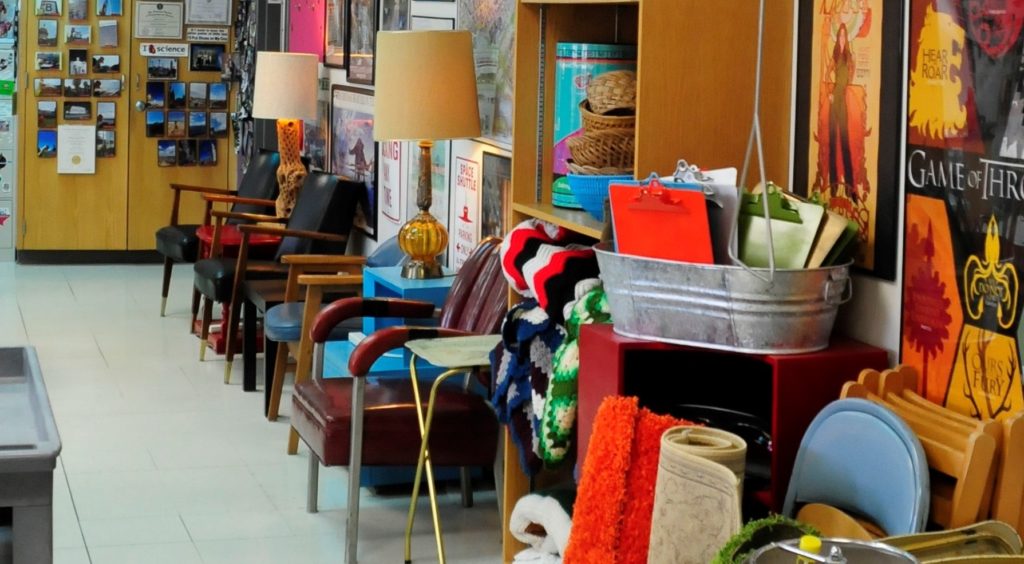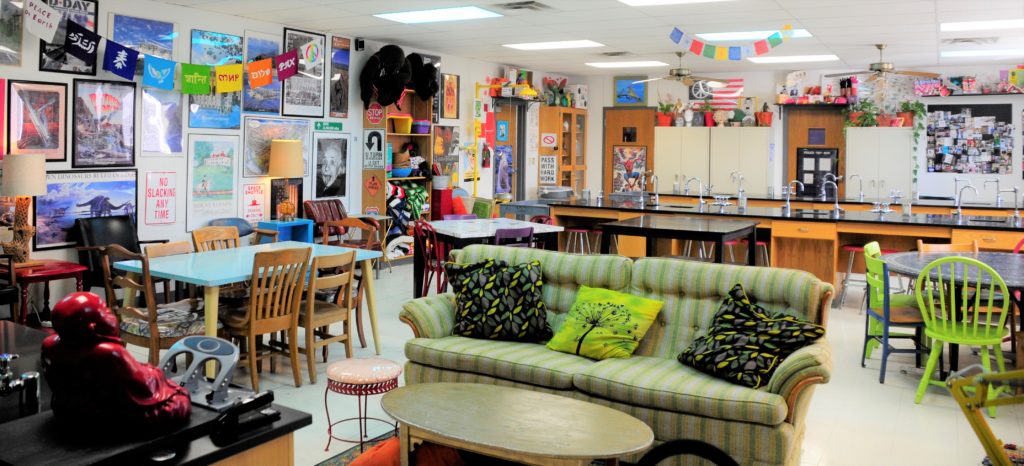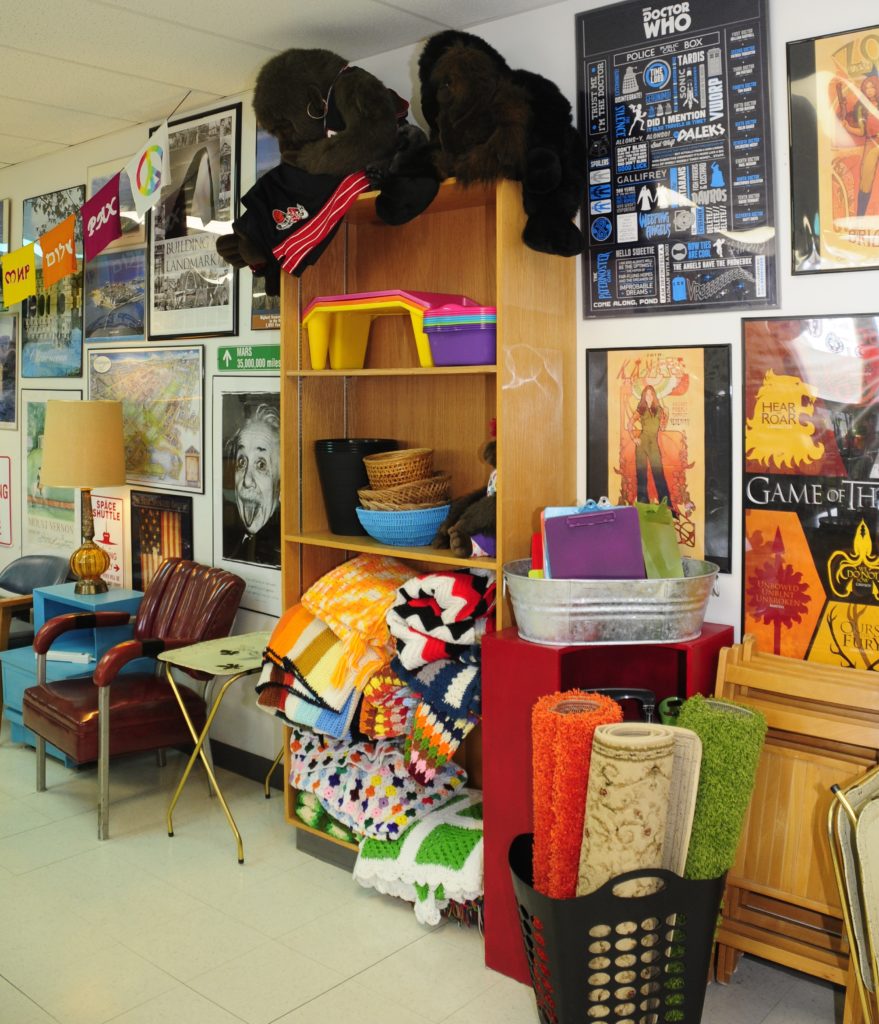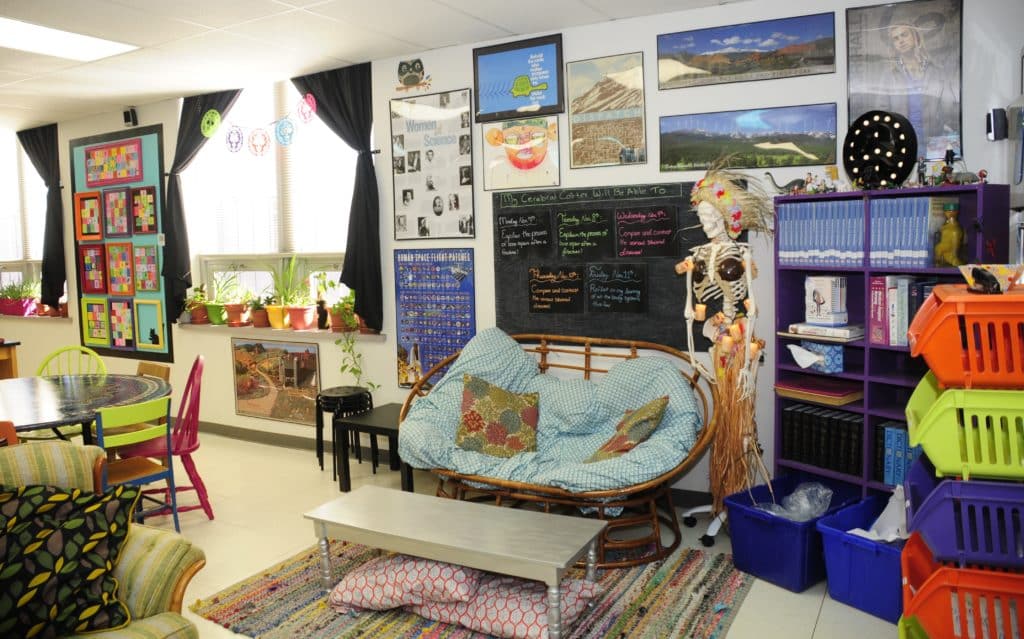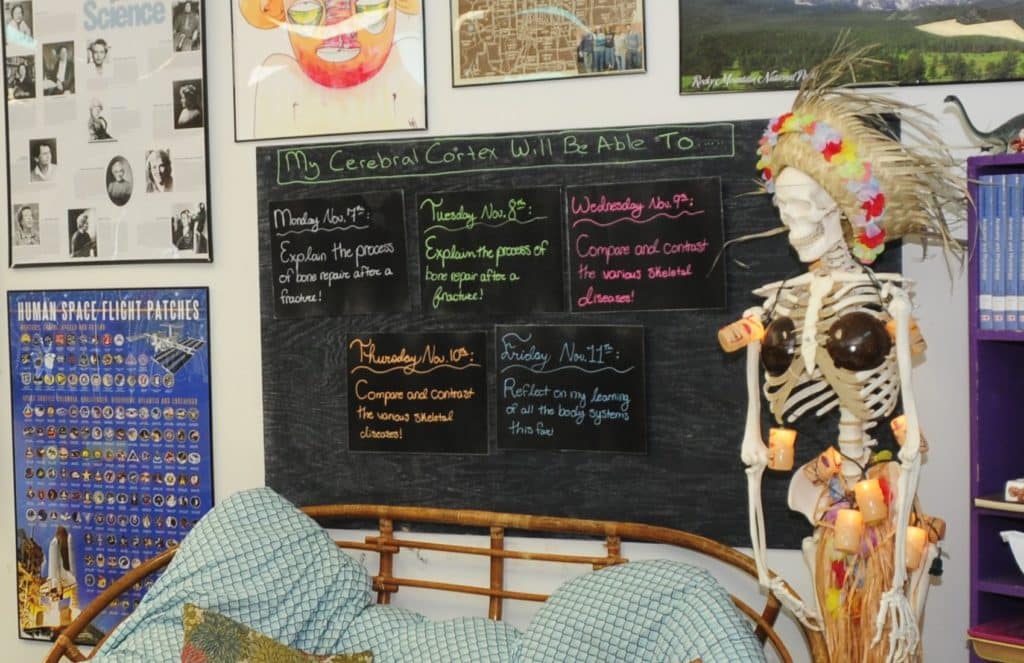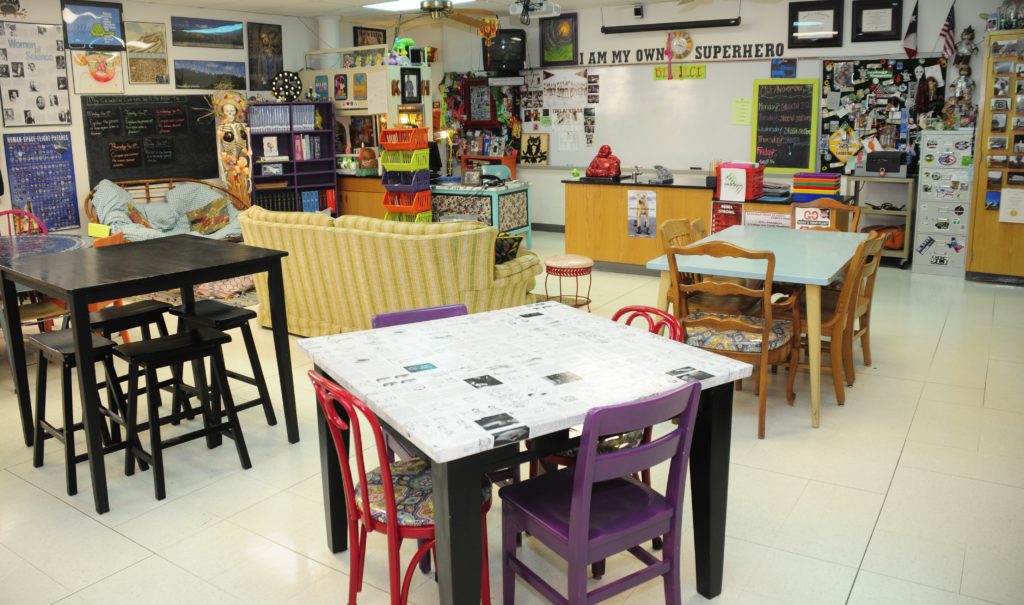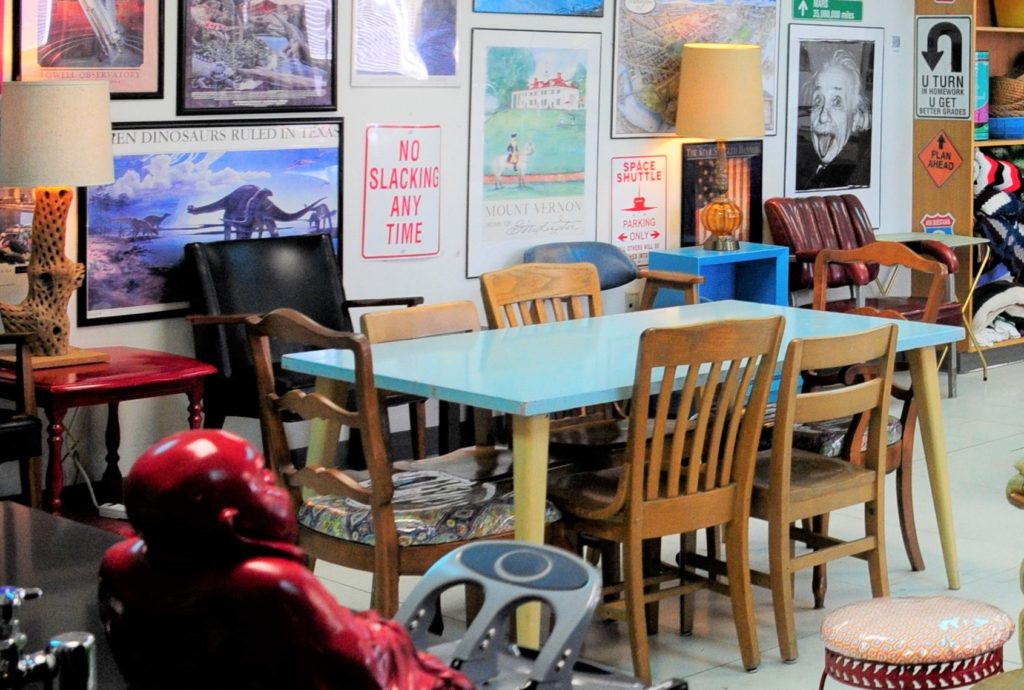Classroom Eye Candy 3: The Funky Science Lab
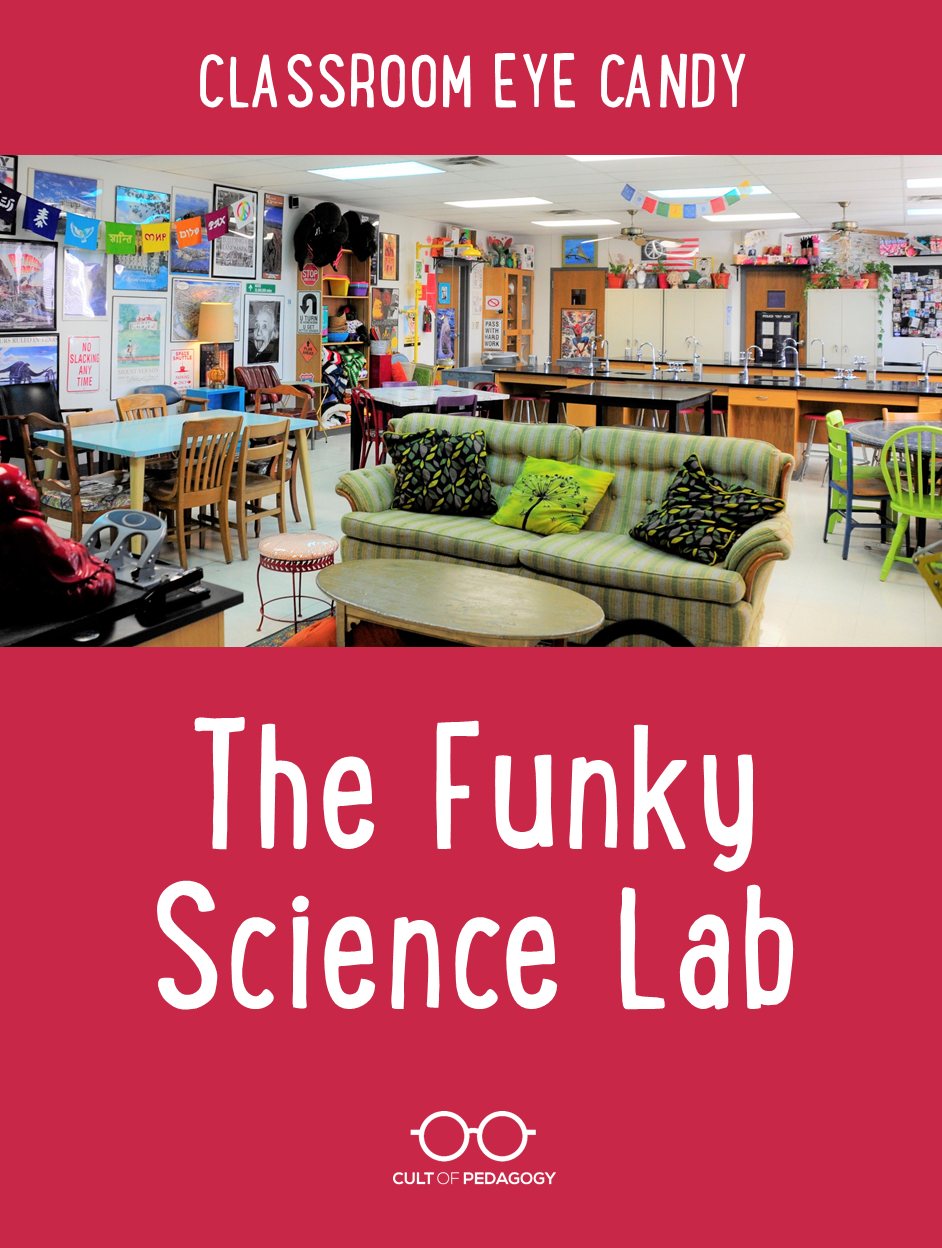
It’s back!! After many, many months, I am ready to show you the third classroom in our Classroom Eye Candy series. All images will open up nice and big in a new window if you click on them.
Ready?
Classroom Tour

Kisaundra Harris
Name: Kisaundra Harris (@curriculumgeek)
Job Title: 11th and 12th Anatomy & Physiology Teacher
School Location: Amarillo, Texas
Q: Tell me about the evolution of this classroom. What was your thinking when you put it together this way?
A: I first became inspired by a previous Classroom Eye Candy post. I immediately fell in love with the room and could not stop thinking about doing the same for mine as well. After a month or so of extensive academic research about flexible seating, I began questioning my students, peers, and coworkers about their feelings about my “crazy” idea. I realized flexible seating went hand-in-hand with my student population of 21st Century learners, but I struggled to find pictures and ideas of how to make this work in a secondary classroom. Then, one Saturday morning, while enjoying a latte at our eclectic and funky locally owned coffee establishment, I had my lightbulb moment: My classroom would have the look, feel and vibe of a coffee shop.
My traditional desks were fine, but they did not lend themselves to my 1:1 classroom, collaboration, or my teaching style. Most of the time after I had introduced the lesson for the day, I would have to awkwardly navigate little “islands” that were created when my students placed their desks together. If students were in the middle of my classroom it was like I was working in a real-life version of a labyrinth.
I started small by adding in the two black chairs, lamp and small tables that you see in the back. This did not require me to get rid of anything, but it helped me to ease into the idea. As you can already predict, this became “the” place to sit in my classroom and students began arriving early so they could stake their claim before class. This proved to me that I was on to something and I needed to take action.
Eventually my curiosity and need to experiment on a larger scale overrode my fear of losing my desks and what I thought would be control. When I decided to make the change I approached our principal, lead counselor, and learning leader with my idea and asked for their input. They gave me the thumbs up.
The last two weeks of school, I slowly started moving out my thirty student desks and on the last day all desks had been removed. These desks were sent to our boiler room where they were stored and used to replace old and broken desks. Up until this point, I only had a fairly good idea of how I wanted my classroom to look. Now that I had a blank canvas in front of me, I had a clear vision of exactly what I needed and how it would look.
I decided to divide the front part of my room into six sections. Each section would have some sort of seating and I would diversify these options when I could. Because of lack of storage at home, I brought in all the individual chairs early. I instinctively placed them on the wall; my students loved the placement and so did I. Many of my soon-to-graduate seniors broke those chairs in by taking their semester exam on clipboards. They were happy to have a comfy seat but also a little angry at me because next year’s class would benefit from my new room arrangement.
Q: Describe some of the most important spaces in your classroom and how they work. What are your favorite parts of the room? What are your students’ favorite parts?
A: The couch, oh my goodness the couch. Students LOVE the couch and it is the most popular seating option in my classroom. Students’ next favorite places to sit are the round table and the turquoise table. These tables make for great collaboration and they can easily pull up other chairs when needed. They work incredibly well with our Chromebooks and allow for great creating and conversation. They are also the perfect size for labs and dissection. One surprise and unexpected benefit for me was the turquoise table. This has become my favorite place to grade assignments as I have room for stacks of papers, grading pens, folders, coffee and all of those other assessment necessities.
Other popular places to sit include the papasan, on the floor around the coffee tables (often on pillows), and on my small stools. I have noticed my male students prefer sitting at the tall table behind the couch more than my female students. With that said, when we are in the midst of an assignment or project they do love to stand around the table with their Chromebooks. It is the perfect height for working with technology.
Finally the most functional and important area of my room is the one around the brown bookshelf. This is where students go to get baskets for supplies, a lap desk, clipboard, TV tray (they love these with their Chromebooks) and folding chairs. If you notice in the photos I have some carpet squares and a rug in a basket. These, along with the lap desks, are not as popular as I thought they would be. They do get used, but not as much as the other items. Something to consider if you’re trying to make the most of your budget.
Q: Explain how the seating works. Do students have assigned seats or is it all totally up for grabs?
In my research leading up to the room rollout, it became obvious I would need a routine in place that would prevent students from domineering over a certain area. So I have them choose a seating area that basically serves as their “home base” for a few weeks. This is where they sit when they arrive to class. Once I have taken roll and have explained the lesson for the day, students are free to move around as they need. In fact, it is vital for them to move from one area to another in order to maximize collaboration and communication with their peers.
Every three weeks or so, right around the time progress reports or report cards are sent out, we have a Musical Chairs Day, when students choose a new home base from one of the nine seating areas, including the seven up front (including the wall with the chairs) the two black chairs in the back, and any of the lab tables. The selection on this day is first come first served, but students must change to a completely different area and not sit in the same one again until they have rotated through all nine areas.
This system gives students an opportunity to sit in all areas of my room. It keeps the process equal for all but it also allows for flexibility with the lesson focus for the day. I wish I could tell students to sit where they would best learn each day, but if I did, I would have a huge fight over the couch Every. Single. Day.
I often forget to remind them about Musical Chairs Day but they always remind me. When I post the announcement on Google Classroom, students begin to plot out where they would like to sit next and they designate who will be the responsible person for claiming their chosen new area. On Musical Chairs Day no is ever tardy and in fact, students get to class earlier than usual.
Q: Has your classroom always been like this? If not, how is the mood of the room different now that you’ve made this change?
A: My classroom has always been a relaxing place for learning, but the changes this year have elevated this feeling. I am having one of my most enjoyable and rewarding years in education and this is my seventeenth year to teach. Seniors are a dream to teach and they do not normally cause discipline issues, but I generally have a handful pop up throughout the year. This year I have had zero discipline issues. Students seem more engaged in the learning and they are never bored. While it would be difficult to prove all of this from a research aspect, it is hard to believe that all of these observations are pure coincidence.
Q: Where did you get the materials for the room?
A: Big tip: Towards the end of the school year is the best time to start snagging those items you need or think you need for your classroom! Let teachers know what you are looking for so you have eyes in lots of places. It was simply coincidence that I started furnishing my room in May and it worked out really well for me.
It is also a good idea to find your inner crafty self or make a friend who has already found his/hers. A can of spray paint, some material, varnish, and sweat equity can make all the difference for a thrift store or garage sale find.
Speaking of garage sales, if you find something you are interested in, tell the seller you are a teacher and what you plan to do with it. I never intended on trying to get a lower price; it just always happened as a result of normal conversation about the item I was inquiring about.
Purchased Items
- 2 IKEA Lack side tables. These are inexpensive and work really well.
- 4 IKEA Marius stools. These get used ALL the time and are a great investment for their super sturdiness.
- 2 IKEA Jordrok pillows. I wish I had purchased more of these. I had no idea my students would love using these to sit on the floor. I also purchased two of the matching pillow cases as well.
- The rug in front of the couch is made of plastic. I purchased mine from Amazon but you can also buy something similar from World Market.
- IKEA Fixa floor protectors. There are several in a package and I wish I had purchased more. They are thin and I found they do not come off like other, thicker pads.
Favorite Projects & Tips
- Round table: This table had previously been in my principal’s office, then my friend’s room and then to my room. When I received it, it had the typical brown top and I wanted something prettier. I found an inexpensive round table cloth on Amazon and decoupaged it onto the table. After many, many coats of varnish it has held up incredibly well!
- Square table with print: I got a great deal on this table from a Facebook garage sale post, but the top needed some TLC. I copied pages out of vintage books and then decoupaged them onto the table.
- Wooden chairs with cloth seats: It takes a small amount of material to recover each seat and it is fairly easy. I would HIGHLY recommend also purchasing clear vinyl to go cover the material. Because you know, life.
- Painted chairs, clipboards and coffee tables: Each item received the same treatment. A thorough sanding, a coat of spray primer, another light sanding, two to three coats of spray paint and all of this would be topped off with three to four coats of spray varnish. Except the tables; I did use liquid varnish on those. Think you’ve added enough varnish? Add a few more coats.
- Pillows: Every pillow has a waterproof cover under the pillow case. I take the pillow cases home and wash them every six weeks.
- Information binder: I printed off several articles and research about flexible seating and placed these in a binder. This was out for parents to view during Meet the Teacher night and I always have it handy in case an administrator or visitor has a question.
Q: What else should we know when studying your room?
A: The only time I ever turn on the overhead lights is lab day. I also play music through my surround sound during most of class. I play from a variety of stations and each depends on the situation, the assignment and the weather. Writing and reflecting calls for jazz while labs require something more upbeat. The only exception to this rule is Fridays. On Fridays we almost always listen to 80’s music; everyone loves the 80’s!
I spent the better part of the first six weeks teaching and modeling for students the procedures and my expectations for the room. I said the same phrases and demonstrated things over and over again until we all got tired of it. Then one day all the chairs were pushed in, the pillows were replaced, and the clipboards were where they were supposed to be. I knew all of the information had finally set in. I still remind them periodically about my expectations but the solid month of instruction certainly helped.
I recently asked some of my students what their favorite part of my room was. I was fully expecting to hear a resounding statement of “the couch,” but their answer surprised and enlightened me. One young lady instantly said her favorite part of my room was the “aura since we don’t have to be stuck in desks all period.” I looked at her with a puzzled expression and another young lady explained by saying, “Mrs. Harris, your room has a chill vibe and it’s a haven for students.” Finally, one young man commented as they all walked out of my room, “Your room is a safe place.”
These comments made me realize that my research, hard work, paint-stained clothes and effort were all worth it. In the end my classroom design experiment has been an overwhelming success for both me and my students. I regret nothing, except that I did not do it sooner. ♥
Do you have a unique classroom? We’re looking for creative and innovative classrooms and other learning spaces. Even if you just have one really magical bulletin board, a brilliantly organized supply closet, or the best filing system ever, let us see it! Send us an email through the contact form with a link to a few high-quality photos in a Google Drive or Dropbox folder and we’ll check it out.
Join my mailing list and get weekly tips, tools, and inspiration—in quick, bite-sized packages—all geared toward making your teaching more effective and fun. To thank you, I’ll send you a free copy of my e-booklet, 20 Ways to Cut Your Grading Time in Half. I look forward to getting to know you better!

